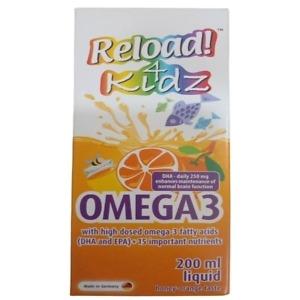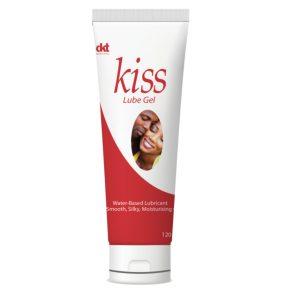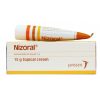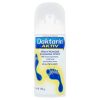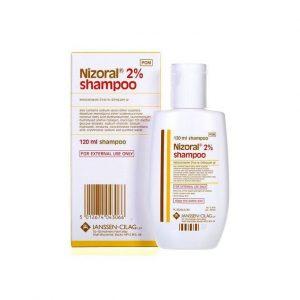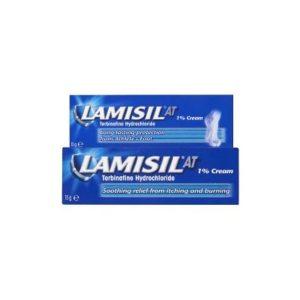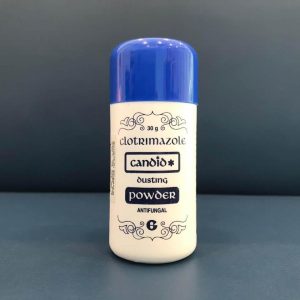Description
Nizoral Cream – Ketoconazole Cream2%, 15G
Nizoral cream is a powerful antifungal treatment that helps to get rid of athlete\’s foot and other fungal skin infections. The cream contains ketoconazole, which destroys the fungi and yeast that cause these conditions. This not only helps to clear up the infection, but also protects against future outbreaks.
Nizoral cream contains a medicine called ketoconazole. This belongs to a group of medicines called ‘antifungals’.
Nizoral cream is used for fungal and yeast infections of the skin in adults.
Nizoral cream works by killing the fungus that causes the infection. It tackles the cause of infection and helps to provide long-lasting protection from returning fungi or yeast which cause infections.
How does Nizoral Cream Work?
Nizoral cream contains the active ingredient ketoconazole, which works to destroy the fungi and yeast which cause skin infections such as athlete’s foot. By destroying these fungi, Nizoral cream helps to treat the infection while protecting against further infections.
Common fungal skin Infections
Fungal skin infections are caused by many different types of fungi, including yeasts. These infections are quite common and often cause an irritating rash.
Here we describe some of the most common fungal skin infections and how to treat them. You’ll also find information about how to avoid catching fungal infections or passing them on.
Athlete’s foot
This is a really common infection. Around seven in 10 people have athlete’s foot (tinea pedis) at some point in their lives. It’s caused by a fungus that grows in the skin between your toes and on the soles of your feet. It grows easily here because the area gets moist when your feet sweat.
The skin between your toes can become itchy, flaky and red, with painful cracks, or fissures. The sole of your foot can also become itchy, thickened and scaly. You might get blisters too.
Athlete’s foot is more likely if your footwear makes your feet sweaty and you’re in a warm, humid environment. You can catch it by walking barefoot on damp, contaminated floors such as in communal bathing or swimming areas. After scratching the affected area, you can spread the infection to other parts of your body.
Ringworm
Despite its name, ringworm is an infection with a fungus not a worm. It gets its name because it often causes a ring-shaped rash. Ringworm infections are very common and can affect different parts of your body.
Ringworm on your body
This is most common on parts of your body that are exposed, such as your arms, legs or trunk. It causes a red, scaly, ring-shaped rash. You can catch ringworm by touching somebody who already has it or by touching contaminated items such as clothing or bedding. Animals, including cats and dogs, can also carry the ringworm fungus.
Ringworm in your groin
Ringworm in your groin causes an itchy, red rash in your groin and around the top of your legs. Also called ‘jock itch’, it’s more common in men. You’re more likely to get it if:
- your skin in this area often gets warm and damp
- you’re very overweight
- you often wear tight clothing
- you have diabetes
You’re most likely to get ringworm in your groin if you have other fungal infections. For example, about half of people who are affected also have athlete’s foot. You can spread it to other parts of your body by scratching. You can also pass it to others by direct contact or by sharing towels or clothing.
Ringworm on your scalp
You can get this at any age, but it mostly affects children. Scaly patches develop on your scalp and may be itchy. In some people, the patches become inflamed and red and have pus-filled spots. You may also develop a pus-filled area on your scalp; this is called a ‘kerion’.
You can get ringworm on your scalp by sharing a contaminated hairbrush or clothing used by somebody with the infection.
WHAT ELSE CAN I DO TO HELP FUNGAL INFECTIONS?
If you have a fungal skin infection, these tips may help:
- always wash your hands after treating the infection to stop it from spreading
- do not scratch the area with the infection, as this can make the infection worse
- keep the affected areas of your skin clean and dry
- do not share towels, bedsheets or combs with other people as you could spread the infection to them
- wash towels and bedding regularly
ARE THERE OTHER TREATMENTS FOR FUNGAL INFECTIONS?
There are many different antifungal medicines. Some are available to buy from a pharmacy, and others are available on prescription.
They can come as creams, gels, sprays, tablets, capsules, and liquid.
Your doctor or a pharmacist will be able to recommend the best treatment for you, based on your condition.
Nizoral Cream Reviews
After using Nizoral Cream, it\’s helpful to let others know about your experience. Reviews of an item help other users know that medicines received have helped the condition it is claimed for, how well the treatment worked or any issues to be aware of. We invite our users to leave a review of both their treatment and of the service provided. Click on the reviews tab to see if there has been feedback on this item.
What is the price of Nizoral Cream in Nigeria?
The price of Nizoral Cream is N1,800
Where can you buy Nizoral Cream In Nigeria?
You can Buy Nizoral Cream at Asset Pharmacy Lagos Nigeria, Nigeria\’s Largest Online Pharmacy.
Click here to see other fungal infection treatments
Patient information leaflet
How to Use
How to use Nizoral Cream
Always use this medicine exactly as your doctor has told you.
Check with your doctor or pharmacist if you are not sure.
How often you should use Nizoral cream
Your doctor will tell you how often to use Nizoral cream and for how long.
The recommended dose is:
- For skin infections of the trunk, groin, feet and hands, apply Nizoral cream to the affected and immediate surrounding area once or twice a day.
Your doctor will tell you how often to use it and for how long.
- For skin infections with reddish brown patches and yellow or white scaling (seborrheic dermatitis), apply Nizoral Cream once or twice a day.
Skin infections will usually get better after 2 to 4 weeks.
Your doctor will tell you how often to use Nizoral cream and for how long.
Do not use the cream more often than your doctor has told you.
Depending on the type of infection, treatment may last 2 to 6 weeks.
Preparing your skin
- Wash the infected skin and dry it well Using Nizoral cream
- Each tube of Nizoral cream is sealed. You will need to use the cap to pierce the seal
- Rub the cream gently into the affected area and surrounding skin with clean fingers
- Do not put Nizoral cream in the eyes Personal hygiene
- Unless the affected skin is on your hands, wash your hands with soap and water after using the cream
- Washing your hands after using the cream will stop you spreading the infection to other parts of your body or to other people
- Do not allow other people to use your flannel or towel.
This will stop them from getting your infection
- Clothing that touches infected skin should be washed and changed often. Nizoral cream is non-greasy and should not stain clothes If you stop using Nizoral cream Usually you will see signs of improvement after 4 weeks. If this is not the case, talk to your doctor. Keep on using the cream until a few days after all symptoms have completely disappeared. Even after your skin is completely cured, you sometimes have to apply the cream once weekly or once per 2 weeks. This prevents your symptoms from recurring. If you swallow Nizoral cream If you swallow any cream, tell your doctor straight away. If you use Nizoral cream more often than you should If you use Nizoral cream more often than you should, it may cause some burning sensation, redness or swelling. If this occurs, stop using Nizoral cream straight away. If you have any further questions on the use of this product, ask your doctor or pharmacist.
Product Details
Product Information of Nizoral Cream
What you need to know before you use Nizoral cream
Do not use Nizoral cream: • If you are allergic to anything in Nizoral cream (listed in section 6 below) • For eye infections Do not use this medicine if the above applies to you. If you are not sure, talk to your doctor or pharmacist before using Nizoral cream. Warnings and precautions Talk to your doctor or pharmacist before using this medicine: • If you have recently used a cream, ointment or lotion on your skin infection that contains a steroid: – 2 – • You should continue to apply a mild steroid (such as hydrocortisone) cream, ointment or lotion in the morning whilst applying Nizoral cream in the evening. The mild steroid treatment can then be gradually stopped over a period of 2-3 weeks. If you have any questions about stopping your steroid cream, ointment or lotion, ask your doctor or pharmacist. Children and adolescents Nizoral Cream is not recommended for use in children under 18 years of age. Other medicines and Nizoral Cream Nizoral cream does not normally react with other medicines. However, tell your doctor or pharmacist if you are taking or have recently taken any other medicines. This includes medicines that you buy without a prescription or herbal medicines. Pregnancy and breast-feeding Nizoral cream can be used if you are pregnant or breast-feeding. Ask your doctor or pharmacist for advice before taking any medicine if you are pregnant or breast-feeding. Driving and using machines Nizoral cream is not likely to affect you being able to drive or use any tools or machines. Nizoral cream contains propylene glycol This medicine contains 6000 mg propylene glycol in each 30 g tube, which is equivalent to 200 mg/g. Nizoral cream contains cetyl alcohol and stearyl alcohol Cetyl alcohol and stearyl alcohol may cause local skin reactions (e.g. contact dermatitis).
Side Effects
Side Effects of Nizoral Cream
Possible side effects
Like all medicines, this medicine can cause side effects, although not everybody gets them. Stop using Nizoral cream and tell your doctor straight away if you notice or suspect any of the following. You may need urgent medical treatment. • Severe irritation or reddening of the skin where the cream has been used, or other signs of allergy during the first few days of treatment. – 4 – This can affect fewer than 1 in 10 people • Peeling or blistering of the skin. This can affect fewer than 1 in 100 people Tell your doctor or pharmacist if you notice or suspect any of the following side effects: Common side effects (affects fewer than 1 in 10 people) • Burning sensation Uncommon side effects (affects fewer than 1 in 100 people) • Problems where the cream has been used such as: – Bleeding – Discomfort – Dryness – Inflammation (contact dermatitis) – Tingling • Rash, hives (also known as nettle rash or urticaria) • Sticky skin Reporting of side-effects If you get any side effects, talk to your doctor, pharmacist or nurse. This includes any possible side effects not listed in this leaflet
Ingredients
Product Ingredients of Nizoral Cream
What Nizoral Cream contains
The active substance is ketoconazole. Each gram (g) of cream contains 20 milligrams (mg) of ketoconazole (2 % w/w). The other ingredients are purified water, propylene glycol, cetyl alcohol, stearyl alcohol, sorbitan stearate, polysorbate 60, polysorbate 80, sodium sulphite (E221) and isopropyl myristate. See section 2 ‘Nizoral Cream contains’ for further information.
How to store
How to store Nizoral Cream
Keep out of the sight and reach of children. Store the cream in its original packaging. Do not store above 25°C. Do not use this medicine after the expiry date which is stated on the label. The expiry date refers to the last day of that month. Do not throw away any medicines via wastewater or household waste. Ask your pharmacist how to throw away medicines you no longer use. These measures will help protect the environment
Delivery
Delievry time are estimates. Can vary due to the time of day you order.
Delivery time estimate are subject to the courier company.
Shipping to Lagos cost starts from N1850 Next day delivery
Shipping to Rest Of Nigeria – 2-3 days cost starts from N2000
Shipping to Rest of Africa – 5-7 working days Cost starts from N12000
Shipping to Europe 7 – 14 working days Cost srats from N18000
Shipping to Rest of the world – 7 – 14 days Cost starts from N18000

